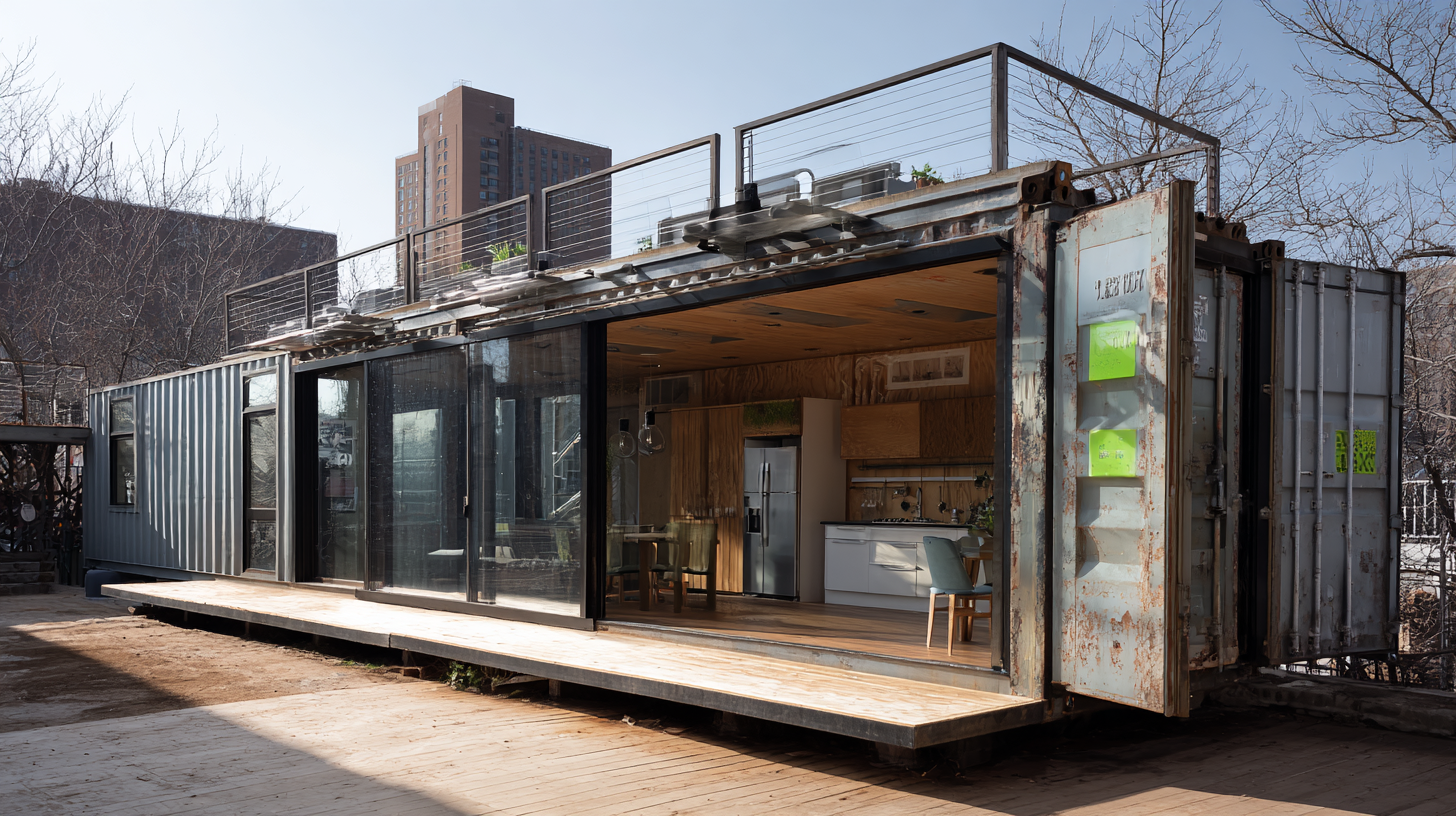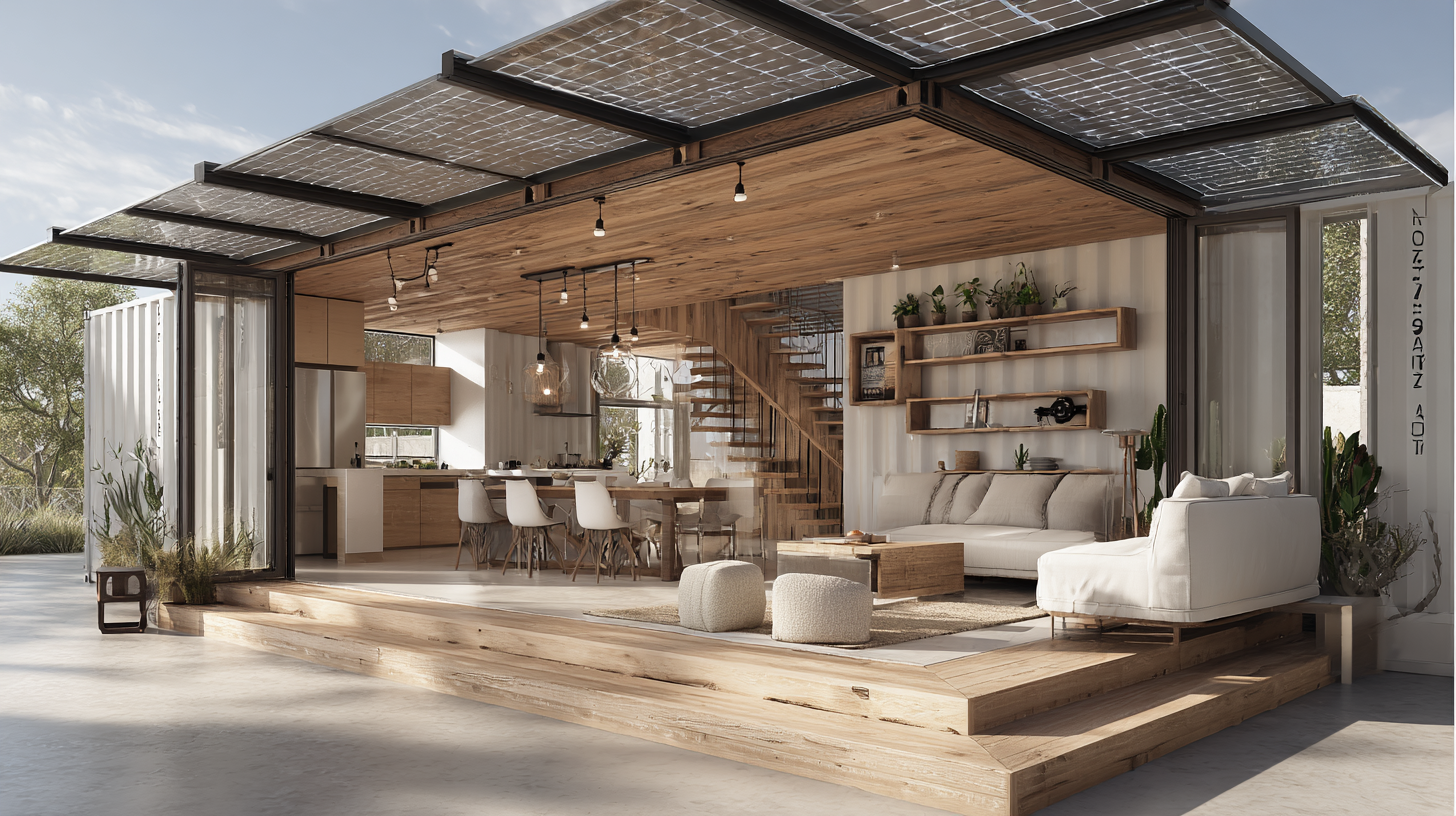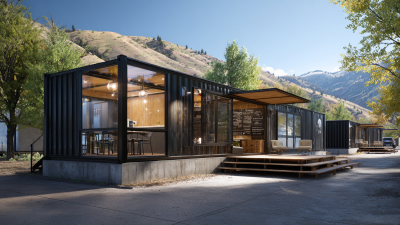Transforming Shipping Containers into Sustainable Living Spaces: A 2023 Housing Solution
In recent years, the concept of transforming shipping containers into sustainable living spaces has gained momentum as a viable housing solution. The rise of urbanization and population growth has intensified the demand for affordable and environmentally friendly housing options, making shipping container living spaces an innovative alternative.
 These versatile structures offer a unique blend of durability, sustainability, and design flexibility, allowing for the creation of customized homes that can be tailored to individual needs. Additionally, the use of repurposed shipping containers minimizes waste and reduces the carbon footprint associated with traditional construction methods.
These versatile structures offer a unique blend of durability, sustainability, and design flexibility, allowing for the creation of customized homes that can be tailored to individual needs. Additionally, the use of repurposed shipping containers minimizes waste and reduces the carbon footprint associated with traditional construction methods.
As we explore how to effectively convert these containers into comfortable, functional dwellings, we will delve into design principles, necessary modifications, and practical considerations that can help transform ordinary shipping containers into extraordinary living spaces.
This approach not only addresses pressing housing shortages but also promotes a lifestyle that celebrates sustainability and creativity.
Exploring the Benefits of Shipping Container Homes for Sustainable Living
Shipping container homes are rapidly gaining popularity as a sustainable housing solution in 2023, offering multiple environmental benefits. According to a report from the International Energy Agency, residential buildings account for nearly 30% of global energy consumption. Converting shipping containers into homes significantly reduces this footprint, as they require less energy for both construction and operation compared to traditional homes. The materials used in shipping containers are often recycled steel, which helps to divert waste from landfills and reduces the demand for new raw materials, making them an eco-friendly option for housing.
Moreover, shipping container homes are designed to be energy-efficient and versatile, allowing for integration with renewable energy systems. A study by the U.S. Green Building Council indicates that homes that incorporate sustainable practices can reduce energy usage by up to 50%. Container homes can be equipped with solar panels, rainwater collection systems, and energy-efficient appliances, further minimizing their environmental impact. Unlike conventional housing, which can take months to build, shipping container homes can be constructed in a matter of weeks, providing rapid solutions to housing shortages while promoting a sustainable lifestyle. This innovative approach to housing not only addresses the pressing issue of urban overpopulation but also aligns with the growing demand for environmentally responsible living options.

Essential Steps to Transform a Shipping Container into a Cozy Home
Transforming a shipping container into a cozy home is both innovative and sustainable. The first essential step is to ensure that the container is structurally sound. Inspect for any rust or damage, and make necessary repairs. Once the container is in good condition, focus on insulation. Proper insulation materials like spray foam or rigid board will help regulate temperature, making your new living space comfortable year-round.
Tips: When choosing insulation, consider both thermal resistance and moisture control to prevent mold growth. Investing in high-quality materials now can save you from costly repairs in the future.
Next, think about the layout and design. Shipping containers typically offer limited space, so maximizing every square foot is crucial. Open floor plans can create a sense of spaciousness, while multifunctional furniture can provide versatility. Use bright colors and plenty of natural light to enhance the cozy atmosphere.
Tips: Incorporate large windows or glass doors to bring in natural light, and use lighter shades for walls and furnishings to create an airy feel. Don’t forget to include personal touches with decor to make the space truly your own.
Eco-Friendly Materials and Designs for Shipping Container Interiors
 Shipping containers have emerged as an innovative solution for sustainable living spaces in 2023, capitalizing on eco-friendly materials and designs. By reimagining these robust structures, architects and designers are creating interiors that are not only functional but also environmentally conscious. According to the Global Sustainable Construction Market Report, the demand for green building materials is projected to reach $500 billion by 2025, underscoring a significant shift towards eco-friendly construction practices. Utilizing reclaimed wood, recycled steel, and low-VOC paints, shipping container homes can significantly reduce their ecological footprint while still providing a stylish and modern atmosphere.
Shipping containers have emerged as an innovative solution for sustainable living spaces in 2023, capitalizing on eco-friendly materials and designs. By reimagining these robust structures, architects and designers are creating interiors that are not only functional but also environmentally conscious. According to the Global Sustainable Construction Market Report, the demand for green building materials is projected to reach $500 billion by 2025, underscoring a significant shift towards eco-friendly construction practices. Utilizing reclaimed wood, recycled steel, and low-VOC paints, shipping container homes can significantly reduce their ecological footprint while still providing a stylish and modern atmosphere.
Tips for enhancing the sustainability of your shipping container interior include prioritizing natural lighting and ventilation. Incorporating large windows and strategically placed vents can minimize the need for artificial heating and cooling, further lowering energy consumption. Additionally, consider using modular furniture made from sustainable sources, which can maximize space without compromising environmental integrity. Pairing these design elements with energy-efficient appliances will optimize your living environment and promote a greener lifestyle.
Another key aspect is effective insulation and energy management. According to the U.S. Department of Energy, proper insulation can save homeowners up to 20% on heating and cooling costs. When converting a shipping container, choose eco-friendly insulation materials such as sheep's wool or recycled denim, which enhance thermal performance while reducing environmental impact. Adopting these sustainable practices not only contributes to a healthier planet but also creates a unique, inviting space for inhabitants.
Maximizing Space: Innovative Layout Ideas for Container Living
As the demand for affordable housing continues to rise, innovative solutions like shipping container homes are gaining traction. A recent report by the Container Housing Association reveals that container homes can be built for as little as 20% less than traditional homes, making them an attractive option for budget-conscious individuals and families. This affordability, combined with the sustainable nature of repurposed materials, contributes to a growing interest in transforming these containers into functional living spaces.
Maximizing space in container living is crucial to creating a comfortable home. Innovative layout ideas, such as open floor plans and multi-functional furniture, can effectively enhance the usability of limited square footage. For instance, the design approach known as "tiny living" emphasizes vertical storage solutions and integrated appliances, which not only saves space but also maintains a sleek aesthetic. According to a study by the International Tiny House Association, efficient design can lead to up to 30% more usable space in a typical 20-foot shipping container. By embracing creative layouts and sustainable practices, container homes represent a viable housing solution that addresses both economic and environmental challenges in the modern world.
Navigating Legal Regulations and Zoning for Container Housing Projects
As the trend of transforming shipping containers into sustainable living spaces gains momentum, navigating legal regulations and zoning requirements has become increasingly critical for developers and homeowners alike. Local zoning laws often dictate the type of structures that can be built in various areas, which can significantly impact container housing projects. For instance, in Orlando, property owners can utilize zoning categories to determine permissible uses of land, which is vital before embarking on any container housing initiative. Understanding these regulations ensures compliance and opens pathways for innovative housing solutions.
In cities like Chicago, the conversation around “granny flats” exemplifies the complexities of zoning and building regulations. While the expansion of such units might address the affordable housing crisis, they are subject to strict zoning laws that vary by neighborhood. These regulations create barriers for homeowners wishing to convert existing spaces into livable units, highlighting the need for comprehensive policy updates. Ultimately, clarity in zoning laws and a willingness from local governments to embrace alternative housing solutions are necessary for the successful integration of shipping container homes into urban landscapes.



